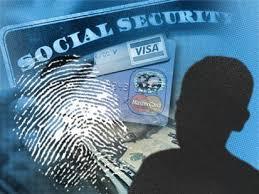
Identity theft occurs when someone uses your data to impersonate you, which is often used for their financial gains. In this article, you will find some of the proven ways to prevent identity theft. Once identity thieves gain access to your email account, they will send spam and phishing emails to all of your contacts. They will steal your bank details and empty your account balance. In addition, your social security number and credit card, cell phone, and other accounts in your name might be swiped by them. All of these crimes are considered identity theft. And it is a growing phenomenon.
The FTC received 4.8 million identity theft and fraud reports in 2020, a 45% increase in 2019, mainly due to a 113% increase in identity theft reports. In addition, in 2020, 1.4 million complaints were related to identity theft.
As current trends continue, identity theft protection will become essential.
Scammers are taking advantage of every possible opportunity, including the COVID-19 crisis. As a result, your information may be exposed as a result of these frequent data breaches.
At this point, it's a good idea to take steps to prevent these malicious agents from stealing your personal information and ruining your financial life.
Here are some tips on what you need to know to reduce your chances of being a target. This will help you identify the warning signs and act quickly to minimize the damage. In addition, there are seven things you can do to make it that much harder for identity thieves.
Eight ways to prevent identity theft.
Protect your social security number
Your social security number is the key to your data; protect it as best as possible. Don't give out your number unless you have to. Instead, shred and delete documents containing your social security number and discard shredded documents.
Be alert to spoofing and phishing.
Scammers can make calls that appear to be from banks, the IRS, government agencies, or businesses, and emails that appear legitimate can attempt to steal your information. Instead of responding to an email or a call, you can call back yourself. Note: Beware of email attachments, which can contain malware.
Use strong passwords and add an authentication step
Never reuse passwords. Don't rely on security questions to protect your accounts, car brand, and mother's name. They are not hard to decode. Use a password manager to create and store unique passwords for your accounts.
Use a digital wallet.
Use a digital wallet every time you pay online or in a store. Digital wallet app that contains secure digital versions of credit and debit cards. In the digital wallet, transactions are symbolized and encrypted, which makes them more secure.
Protect your mobile devices
Mobile devices can represent a real risk. The Javelin report states that only 48% of mobile users regularly lock their mobile devices. Use passwords on your electronic devices. Using a banking app is safer than a mobile banking browser.
Avoid using public Wi-Fi networks.
Hackers can track your activities when you use free public Wi-Fi.
Do not use public Wi-Fi for banking, shopping, or other sensitive transactions.
Use a virtual private network service to create a secure connection if you are using public Wi-Fi
Check credit reports and regularly monitor financial statements
Make sure all accounts are reported correctly and watch out for signs of fraud. Routinely check your financial statements. Make sure you recognize all transactions.
Sign up to receive email or SMS notifications to find out when and where your credit cards are being used, when there are withdrawals or deposits to financial accounts, and more.
Use identity protection services.
Use identity theft protection services to help you manage and protect your identity. For example, the United States government provides an Identitytheft.gov Identity Recovery Service, which can help victims of identity theft report and recover from identity theft.
How to report identity theft
Report the identity theft to the Federal Trade Commission at identitytheft.gov and follow the recommended steps to create a recovery plan. In addition, you should contact the police, postal service, IRS, and credit bureaus.
If you have identity theft protection, you may be eligible for identity recovery services.
FOR MORE INFORMATION ON HOW JIM McCLAFLIN, EA, NTPI FELLOW CAN BEST HELP YOU WITH YOUR TAX FILING NEEDS, PLEASE CLICK THE BLUE TAB ON THIS PAGE.
THANKS FOR VISITING.
Jim McClaflin, EA, NTPI Fellow, CTRC